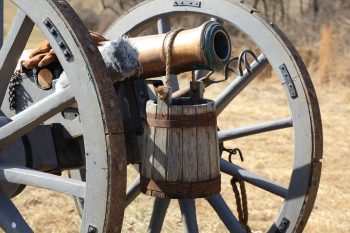By Katie Toth, Special to The Times
John Muir, a historical advocate for National Parks, once said “Thousands of tired, nerve- shaken, over-civilized people are beginning to find out that going to the mountains is going home; that wildness is a necessity.”i National parks protect the natural environment, wildlife, and biodiversity; however, preservation is falling behind in their priority. The social construction of nature values social, political and economic benefits over the true conservation of the environment in National Parks across the globe.
Due to the social construction of desired forests and control over the indigenous groups, fire suppression tactics in the Venezuela National Parks have created conflict between the government and natives. The social constructions shaping the institution’s culture create boundaries that are important for identity formation. The tribes use fire to create a segregated grassland and forest biome within the park; however, the government’s repressive tactics create their own “narratives of history and indigeneity” that develop the Canaima National Park into a desired forest environment.ii This aspiration for control over nature to socially construct this park has increased fuel loads – not only threatening the safety of the forests, but also creating tension and resistance. The government is prioritizing the appearance of the national park over the true culture. Besides socially restricting the environment of national parks, the government has political agendas that interfere with conserving the biodiversity.
Government agencies attempted to remove a group of wild horses from Missouri National Park. These parks were created to conserve the natural landscape and biodiversity; though, the government – with social constructions in mind – have certain visions in place that obstruct the natural appearance of these parks. Despite their historical and cultural significance, the government believed this species to be “feral and exotic…with no legitimate place in agency- mandated ecosystem management and restoration scenarios.” iii This attitude towards the local wildlife shows the social construction – non-environmental based agenda – that the government preaches. The fact that the locals had to protest for the presence of this natural breed on protected land speaks to the power that the government has over the environment. By removing 25-30 wild horses from the preserved area, they are attempting to limit the specie’s interaction with the land and their natural practices in order to create a park that they believe will be the most profitable.
Alongside political benefit, governments have involved in national parks for the economic benefit.
Despite an increase in pride and national culture due to tourism, a study in Kinabalu National Park observed an invasive anti-social behavior and congestion that contrasted these positive effects.iv Monetary profit has become the forefront of reserved areas. Governments have manipulated National Parks into what they believe people will pay to see. The locals give into this manipulation in some cases because at times it brings them profit at the sacrifice of their culture. For instance, Edward Curtis edited images of American Indians in Yosemite National Park. He staged American Indians, colored the images taken, and dressed them in certain ways that did not align with their typical behavior.v The tribes were dehumanized to act like an exhibit of the park and draw more visitors. He paid the Indians perform one of their ritual dances, but in order to rebel, they performed the dance backwards, thus showing the negative effects of tourism
on the residents of National Parks. The political power imbalance due to economic benefit has remained in this domain throughout history and continues to persist today.
These sources intertwine the ideas from John Gast’s painting “American Progress,” which depicts Westward Expansion. Showing a Greek goddess driving the ‘savage’ native tribes and animals off the terrain for new settlers and technology to be placed in that land,vi it can be gathered that humans want to put any open land to use and expand to a uniform nature.
Governments across the world have set ideas of normalcy for their reserved parks that reap political, economic, and social benefits. Because they have power, they can set these social constructions in place. Moving forward, conservation needs to become the priority of national parks. To preserve the people and wildlife inhabiting these parks would be of the upmost benefit for the environment. Putting the natural land to use and driving out native species harms the biodiversity and culture ruining the timelessness of these areas. Globally, governments need to push for environmental change regarding the land and culture of National Parks.
Word Count: 728
i Wood, Harold. “Quotations from John Muir.” Quotations of John Muir – Writings – The John Muir Exhibit – Sierra Club, vault.sierraclub.org/john_muir_exhibit/writings/favorite_quotations.aspx.
ii Sletto, Bjørn. “Conservation Planning, Boundary-Making and Border Terrains: The Desire for Forest and Order in the Gran Sabana, Venezuela.” Geoforum, vol. 42, no. 2, Mar. 2011, pp. 197–210. EBSCOhost, doi:10.1016/j.geoforum.2010.12.006.
- Rikoon, J.Sanford. “Wild Horses and the Political Ecology of Nature Restoration in the Missouri Ozarks.” Geoforum, vol. 37, no. 2, Mar. 2006, pp. 200–211. EBSCOhost, doi:10.1016/j.geoforum.2005.01.010.
- Jaafar, Mastura, et al. “Perceived Social Effects of Tourism Development: A Case Study of Kinabalu National Park.” Theoretical and Empirical Researches in Urban Management, vol. 10, no. 2, Research Center in Public Administration and Public Services, 2015, pp. 5–20, http://www.jstor.org/stable/24873524.
- Zamir, Shamoon, et al. “Native Agency and the Making of ‘The North American Indian’: Alexander B. Upshaw and Edward S. Curtis.” American Indian Quarterly, vol. 31, no. 4, University of Nebraska Press, 2007, pp. 613–53, http://www.jstor.org/stable/30113979.
vi Gast, John. American Progress. p. 1, https://jstor.org/stable/community.13893448.
Katie Toth is a current freshman at Dickinson College studying environmental science and a 2021 graduate of the Downingtown STEM Academy.





